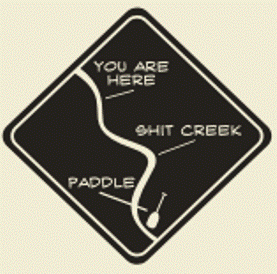Peace, Love and Swastikas - The Power of a Symbol
No…I am not a Nazi.
The Christian cross, the Judaic star of David, the Tree of Life of the Kabbalah, the Buddhist 8-spoke Wheel of Dharma… religious symbols adorn our lives, our homes, our flags and our hearts. But what’s really behind the symbols that make them ‘good or bad’?
Recently, I stumbled across a quite surprising explanation of the swastika symbol. Of course, at first glance, the Nazi-associated symbol evoked immediate emotions of evil, hatred, racism, and mass destruction. No bueno. The surprise came when this symbol appeared in an article dealing with Cosmic Energy (Tibetan word Fohat). Fohat is the animating principle electrifying every atom into life. It’s the link between Spirit and Matter. It’s the power of attraction between atoms, seen as Divine Love (Eros).
The swastika is the symbol representing the activity of the Fohat. Take away your socialized context and, visually, the swastika is an equilateral cross; the vertical line symbolizing creation and the horizontal symbolizing universal expansion, with 4 extending lines representing the 4 universal elements of Air, Water, Fire and Earth. If rotated clockwise, these extending lines would create a circle, symbolizing eternal, infinite movement. Simply, the swastika originated as an Eastern symbol of an equilateral cross inside of a circle, which represented the great process of becoming - the expansion of the universe and of the ever-evolving Self.
This symbol, dating back to 10,000 B.C. literally translated from Sanskrit “Su Asti”, meaning “Good Being” or “Good It Is”. Religions such as Hinduism, Jainism, and Buddhism used this symbol on coins, pottery and in churches to depict good fortune, prosperity, long life and peace. Even the Navajo nation wove the symbol into their blankets and tapestries.
It wasn’t until the 1930’s when Adolf Hitler became the leader of the Nazi party that this symbol became one of the most despised in all of history. Looking for a symbol to represent the Nazi movement, German archaeologist Heinrich Schliemann discovered the swastika symbol on some pottery and looked to an Indian literature scholar to help him understand its meaning. In what’s been coined as “cultural theft”, the swastika was assigned as the symbol of the Aryan warrior race that invaded the Hindus of India. Hitler loved this mythological symbolism and adopted it as the symbol for his Nazi party. It’s interesting to note that the clockwise symbol (the swastika as we know it, with the arms pointing right) and the counterclockwise symbol, the sauvistika, pair up to portray opposites such as light and darkness.
Speaking out against the proposed ban of the swastika symbol, a representative of the Hindu Forum of Britain said, “The swastika has been around for 5,000 years as a symbol of peace,” noting that banning all use of the swastika would be akin to banning the Christian cross because the Ku Klux Klan used burning crosses to terrorize African Americans.
By 1945, there were over 8 million members of the Nazi party. To think that over 8 million people were coerced into believing that the swastika - a symbol that for thousands of years represented well-being, good fortune, prosperity, long life and peace - was the symbol of German nationalistic pride that condemned millions of Jews is, well…unthinkable. How in the world could that many people be blinded by the true meaning of this symbol?
I wonder…’How absent was the Fohat - the Cosmic Energy of Divine love - that finds its very Being in the symbol of the swastika - during this period where the symbol itself was crucified by the Nazis?’ In your life journey of evolving and becoming the most enlightened and love-filled person that you can be, if forever lost in the swastika, what symbol does the Fohat inhabit for you? Before you answer… I challenge you… “Are you sure?”



